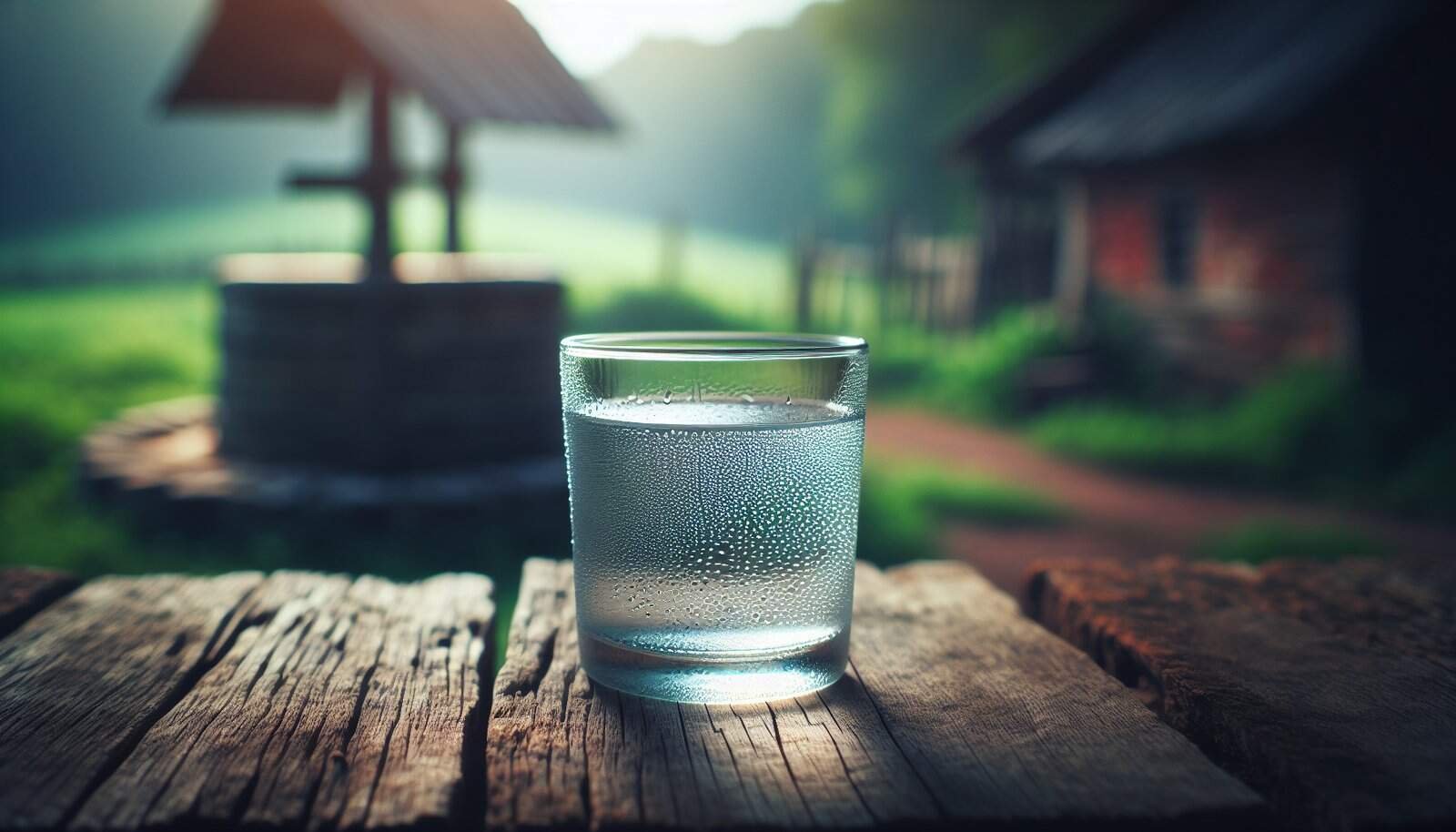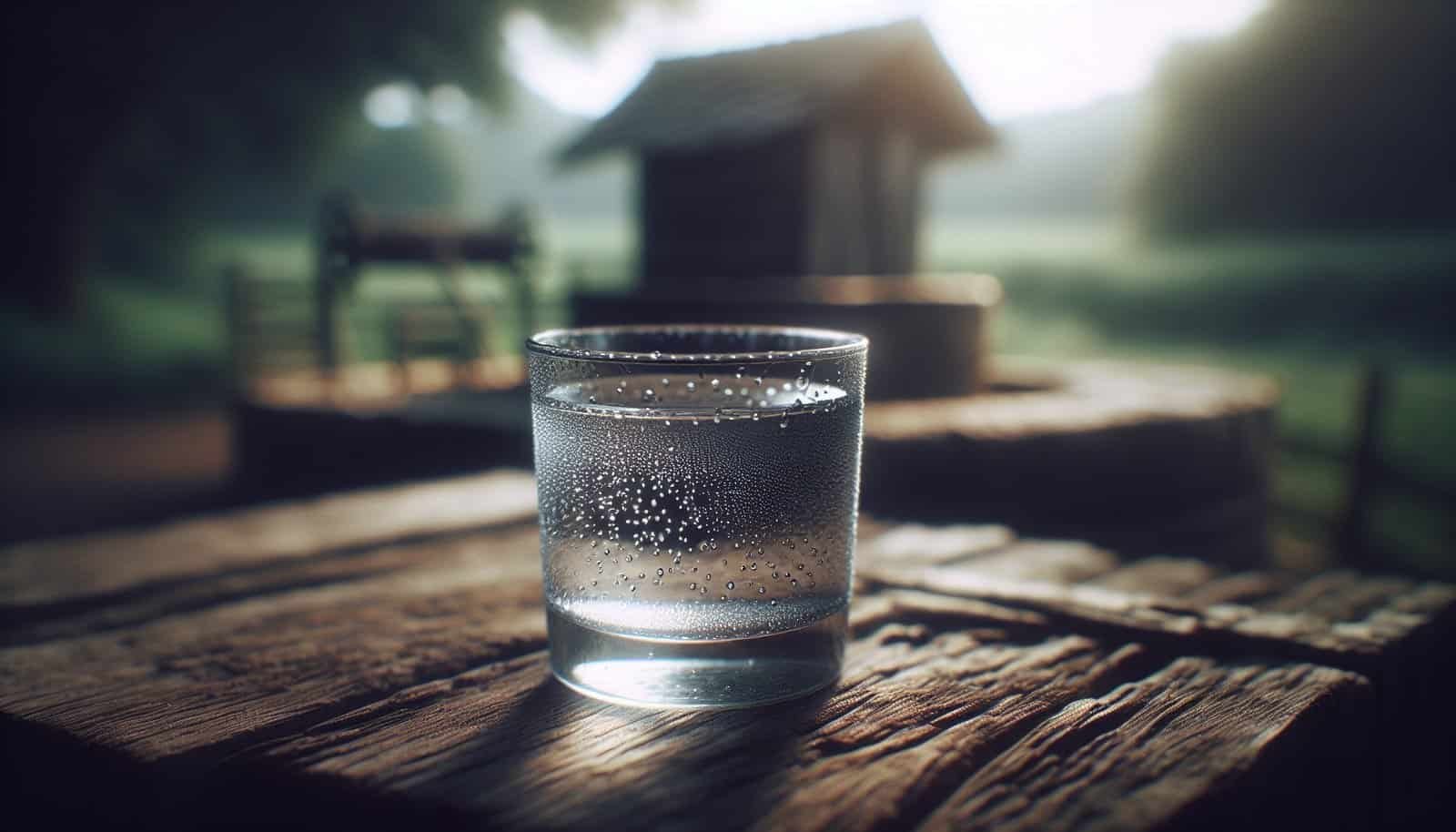Are you unhappy with the taste of your well water and want practical ways to make it better?
Why taste problems with well water matter
You might think taste is just an aesthetic issue, but it’s often the first sign that something in your water needs attention. Bad taste can discourage you from drinking enough water, affect cooking and beverages, and sometimes indicate corrosive conditions or contaminants that could have health or plumbing consequences. Understanding why your water tastes off helps you choose the right fixes instead of guessing.
How to approach the problem: a step-by-step mindset
Start by gathering information and then act methodically. Test your water, identify likely causes, try targeted treatments, and maintain the system. This prevents wasted expense and ensures the solutions you use actually address the root cause. You’ll want both short-term remedies (like filters for immediate taste improvement) and long-term solutions (like well maintenance or treatment systems) depending on the diagnosis.

Common tastes and odors and what they usually mean
Different flavors and smells point to different problems. Use taste and odor clues as a first diagnostic tool, but always confirm with testing for safety and precision.
Typical taste and odor descriptions
- Metallic (iron or copper): Often a metallic or “blood-like” taste.
- Rotten egg (sulfur): Distinct hydrogen sulfide smell.
- Salty or brackish: Indicates high sodium or chloride.
- Bitter or medicinal: Could be pesticides, nitrates, or high mineral content.
- Earthy or musty: Organic material or decaying matter.
- Chalky or mineral: Hard water with calcium and magnesium.
- Faint chlorine taste: Chlorination from disinfection or municipal blending.
Table: Taste/odor clues and likely causes
| Taste/Odor | Likely cause(s) | Typical immediate action |
|---|---|---|
| Rotten egg / sulfur | Hydrogen sulfide gas, bacterial activity | Aerate, activated carbon, sulfur-specific filters; test well for bacteria |
| Metallic | Iron, manganese, copper, or corroding pipes | Test for iron/manganese; install iron filter or water softener |
| Salty | High sodium, chloride intrusion, seawater, road salt | Test for sodium and chloride; consider reverse osmosis or alternate water source |
| Bitter/chemical | Pesticides, herbicides, nitrates, industrial contaminants | Do a comprehensive lab test; treat with RO, activated carbon, or address contamination source |
| Earthy/musty | Organic matter, algal compounds | Filtration and activated carbon; shock chlorination and well maintenance |
| Chalky/mineral | Hard water (calcium, magnesium) | Water softener or scale inhibitors |
| Chlorine taste | Recent chlorination or treated blending | Let water sit, use activated carbon filter |
Test your well water — the essential first step
You can’t fix what you don’t know. Testing determines whether taste is due to benign minerals or a potentially harmful contaminant.
What tests to run
Start with a basic well water analysis and expand as needed:
- Bacteriological test (total coliform and E. coli): urgent if taste/smell coincides with discoloration or illness.
- Nitrate/Nitrite: especially if you have children, pregnant household members, or agricultural activity nearby.
- pH, hardness (calcium and magnesium), iron, manganese.
- Sulfate and chloride.
- Total dissolved solids (TDS).
- If you suspect pesticides, VOCs, or other chemicals, run an expanded panel.
Where to get tests and how to collect samples
You can use certified state labs, local health departments, or private accredited labs. Follow sampling instructions exactly—use sterile containers for bacterial tests and avoid contamination. Many labs provide sampling kits and clear directions. Keep records of results and dates.
Interpreting results
Compare results to EPA drinking water standards and state guidelines. Some compounds (like iron or manganese) are aesthetic concerns only; others (like E. coli or nitrates) are health risks that require immediate action. If results are ambiguous or severe, consult a water-treatment professional or your health department.

Identify the source of the taste problem
Taste disturbances can originate from the well, the distribution system, or household plumbing and appliances.
Well-related causes
- Natural minerals in aquifer (hardness, iron, manganese).
- Organic matter in shallow wells causing musty tastes.
- Hydrogen sulfide produced by bacteria in aquifer or well components.
- Surface contamination entering the well due to poor sealing or flooding.
Plumbing and system causes
- Corroded pipes releasing iron or copper.
- Sediment in pressure tank or piping causing flavor changes.
- Water heater with sediment causing metallic or rotten-paper smells when hot water is used.
Seasonal or temporary causes
- Heavy rains or spring melt can increase runoff and organic material entering shallow wells.
- Pump repairs or sudden changes in water table depth can alter mineral concentrations.
Practical treatments by cause
After testing and source identification, choose treatments targeted at the specific issue.
If iron or manganese is causing metallic taste
- Install an oxidizing filter (air injection, manganese greensand, or catalytic carbon) to remove soluble iron and manganese.
- Use water softeners for low-level iron in combination with resin systems.
- For particulate iron, a sediment filter trap or backwashing filter works well.
If hydrogen sulfide (rotten egg) is the issue
- Aeration or oxidizing filters can remove low-to-moderate H2S.
- Chlorination (shock chlorination) can kill bacteria that produce hydrogen sulfide in the well or plumbing—follow with flushing and testing.
- Activated carbon can adsorb sulfur compounds but may quickly foul if bacteria are present.
If hardness (chalky taste) bothers you
- Install a water softener (ion exchange) to reduce calcium and magnesium.
- Use scale inhibitors for specific appliances if you prefer not to soften all household water.
- For drinking water, consider a point-of-use reverse osmosis (RO) system for a crisp taste.
If salty or high chloride levels are present
- Reverse osmosis or distillation can reduce sodium and chloride for drinking water.
- Investigate and address possible sources (seawater intrusion, road salt, agricultural runoff).
If pesticides, VOCs, or chemical tastes occur
- Activated carbon (GAC) filtration is effective for many organic chemicals and VOCs.
- Reverse osmosis provides broad contaminant reduction and is a good drinking-water solution if organics and minerals both need reduction.
- Work with environmental authorities if contamination is from a nearby source—remediation or alternate water may be needed.
If bacterial contamination is found
- Shock chlorinate the well and plumbing.
- Repair well seals and protect wellhead from surface runoff.
- Consider continuous disinfection (automatic chlorinators or UV) if bacterial recontamination recurs.

Shock chlorination: what it does and when to use it
Shock chlorination can eliminate bacteria and reduce organic tastes. It’s commonly used after a positive coliform test or following well construction, flooding, or mechanical work.
Basic steps (high-level summary)
- Calculate the well volume and required chlorine concentration (usually 50–200 ppm free chlorine depending on situation).
- Mix and add household bleach (unscented chlorine) carefully.
- Circulate chlorinated water through the plumbing until chlorine odor is at every tap, then let the system sit for 8–24 hours.
- Flush until the chlorine smell is gone and retest for bacteria.
Note: Exact proportions and safety steps are critical—if you are unsure, hire a professional to do shock chlorination. Incorrect use can damage equipment and pose safety hazards.
Filtration and treatment options explained
Knowing the main technologies helps you pick the right combination for taste and safety.
Activated carbon (GAC) filters
- Good for improving taste and removing chlorine, many organic compounds, and some pesticides.
- Available as point-of-use (under-sink) or whole-house systems.
- Replace cartridges regularly to avoid bacterial growth and maintain effectiveness.
Reverse osmosis (RO)
- Removes many dissolved solids, metals, and organics, producing very clean-tasting water.
- Best used as a point-of-use system for drinking and cooking due to water waste and lower flow rate.
- Consider a remineralization stage if you prefer some mineral taste.
Water softeners (ion exchange)
- Exchange calcium and magnesium ions for sodium or potassium, eliminating hardness and improving taste/feel.
- They can sometimes remove low levels of iron but are not effective for many other contaminants.
Oxidizing filters and air injection systems
- Convert soluble iron and manganese to particulate form so they can be filtered out.
- Effective for well water with moderate iron/manganese and often paired with backwashing filters.
UV disinfection
- Kills bacteria and viruses without altering taste.
- Must be used with prefiltration if water is cloudy, and doesn’t provide residual disinfection, so it won’t prevent recontamination after treatment.
Distillation
- Produces high-purity water by boiling and condensing vapor.
- Effective but slow and energy intensive; may yield flat taste.
Aeration systems
- Useful for hydrogen sulfide removal by releasing the gas to the air.
- Often effective for low-level sulfur smells but must be vented safely.

Point-of-use (POU) vs. point-of-entry (POE) systems
Decide whether you want to treat water at a single tap (POU) or treat all water entering the house (POE).
- POE systems (whole-house) protect plumbing, appliances, and bathing water; useful for hardness, iron, sulfur, or bacterial concerns affecting the whole house.
- POU systems (under-sink RO or carbon filters) are cost-effective for improving drinking and cooking water without treating the whole house.
Choose based on which uses are most sensitive to taste: if only drinking water matters, a POU RO or carbon filter may be enough.
Maintenance routines to keep taste improved
Routine maintenance ensures good taste long-term.
- Replace filter cartridges per manufacturer recommendations.
- Backwash and regenerate systems as required.
- Test water annually for basic parameters and after any system work, flooding, or changes in taste.
- Inspect wellhead seals, caps, and the area around the well to prevent contamination.
- Flush water heater yearly to remove sediment that can cause off-tastes in hot water.

Plumbing and household strategies
Sometimes the taste issue isn’t the well water itself but how it’s handled in the house.
- Run cold water for a minute if water hasn’t been used for a while—stagnant water can pick up metallic tastes.
- Use cold water for drinking and cooking (hot water may leach metals from piping).
- Replace old galvanized or corroded plumbing to reduce metallic taste.
- Install filters at the refrigerator or ice maker to improve beverage taste.
Cost considerations and budgeting
Costs vary based on the problem and treatment complexity.
- DIY test kits: $20–$100 (good for preliminary screening).
- Certified lab testing: $50–$300+ depending on panel size.
- Point-of-use carbon filter: $100–$500 installed.
- Under-sink RO: $300–$2,000 depending on features and installation.
- Whole-house filtration (iron filter, softener, aeration): $1,500–$8,000 depending on capacity and system type.
- Shock chlorination by a pro: $150–$400, while DIY materials cost much less but require caution.
Balance upfront cost with long-term operating costs, including filter replacements, salt for softeners, and electricity.
When to call a professional
If you find coliforms, nitrates above safe limits, persistent or worsening tastes after simple fixes, or if you’re unsure how to shock chlorinate, call a licensed well or water treatment professional. Professionals can perform thorough diagnostics, recommend appropriate systems, and ensure correct installation and maintenance.
Safety and health considerations
- If tests show E. coli, nitrates above standards, or other harmful contaminants, use bottled water or a certified point-of-use system until the problem is resolved.
- Pregnant people, infants, and immunocompromised individuals are more sensitive to waterborne contaminants—take extra precautions.
- Never mix chemical disinfectants (like bleach with other household cleaners). Follow manufacturer guidance for system disinfection.
Simple household tips for improving taste immediately
If you want quick improvements before full treatment:
- Use a refrigerator or pitcher carbon filter for better-tasting drinking water.
- Chill water in the fridge to reduce perception of metallic or sulfur tastes.
- Boil water and let it sit uncovered to release volatile sulfur compounds (effective for mild H2S).
- Use cold water for consumption and cooking; hot water is more likely to carry off-tastes.
- Replace faucet aerators periodically; they can trap sediment and contribute to taste issues.
How to choose a water treatment professional or product
- Check for certifications: NSF/ANSI standards for filters and systems, and state licensing for well contractors.
- Ask for references, written estimates, and guaranteed performance specifications.
- Request water quality goals: any reputable provider should design a system based on your lab results.
- Compare warranty, service plans, and ongoing costs for media or cartridge replacements.
Case examples (brief real-world scenarios)
- Scenario 1: You smell rotten eggs in the morning. Tests show low-level hydrogen sulfide. Solution: Install an aeration system and treat the well head; where bacteria are present, shock chlorination followed by maintenance prevented recurrence.
- Scenario 2: Metallic taste and brownish tint after a storm. Tests reveal iron and total coliforms. Solution: Shock chlorinate, then install a backwashing iron filter and record annual testing.
- Scenario 3: Salty taste after a road-salt season near a coastal aquifer. Tests reveal high chloride and sodium. Solution: Use RO for drinking water and consult local authorities about groundwater intrusion; avoid using softened water as drinking water if sodium is a concern unless you use potassium chloride.
Frequently asked questions
How long until taste improves after treatment?
It depends. For simple carbon filters or RO, taste can improve immediately. After shock chlorination you’ll need to flush out chlorine, so taste may be worse until flushing is complete. For whole-house systems like softeners or oxidizing filters, improvement is usually immediate once the system is functioning and properly sized.
Can I use a pitcher filter for well water?
Pitcher filters with carbon can help reduce chlorine, some organics, and improve taste, but they are limited in capacity and effectiveness against dissolved minerals, nitrates, or bacteria. Use them as a temporary or supplemental solution.
Is boiling water enough to improve taste?
Boiling can reduce volatile compounds like hydrogen sulfide by releasing gas, but it won’t remove dissolved minerals or chemical contaminants. Boiling also concentrates some contaminants (like nitrates) and won’t make bacterially contaminated water safe long-term.
Will a water softener remove hydrogen sulfide?
Not reliably. Water softeners can sometimes reduce low levels of hydrogen sulfide if it’s associated with hardness, but specialized sulfur removal systems or aeration are more effective.
Long-term prevention strategies
- Maintain wellhead integrity: keep the area around your well clear, ensure caps and seals are intact, and prevent surface water pooling.
- Regular testing: test annually for baseline parameters; test after any flooding, repairs, or taste changes.
- Manage nearby contamination sources: septic systems, agricultural runoff, and chemical storage should be properly sited and maintained to protect groundwater.
- Keep records: document tests, treatments, and maintenance so you can track trends and catch problems early.
Summary and practical next steps
- Observe and describe the taste/odor carefully.
- Get a certified lab test for a basic panel (bacteria, nitrates, iron, manganese, pH, hardness).
- Identify the likely source (well, plumbing, seasonal).
- Implement targeted solutions: carbon filter or RO for organics/chemical tastes; oxidizing/iron filters for metallic tastes; aeration or sulfur-specific systems for rotten egg smell; shock chlorination for bacterial issues.
- Maintain systems and test annually or after changes.
If you act methodically—testing first, then applying the right treatment—you’ll save money and get water that tastes good and is safe for your family. If you need help selecting tests or systems, provide your recent lab results and describe the taste and any recent events (storms, plumbing work) and you’ll get personalized guidance.
